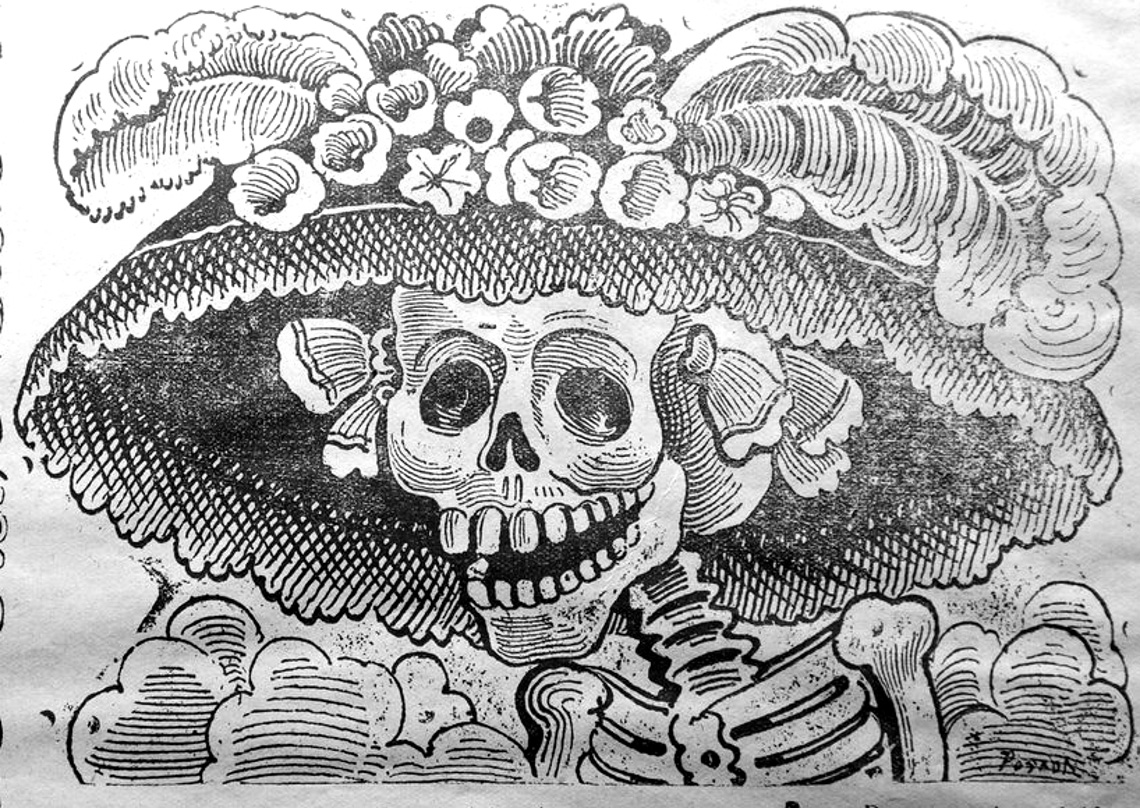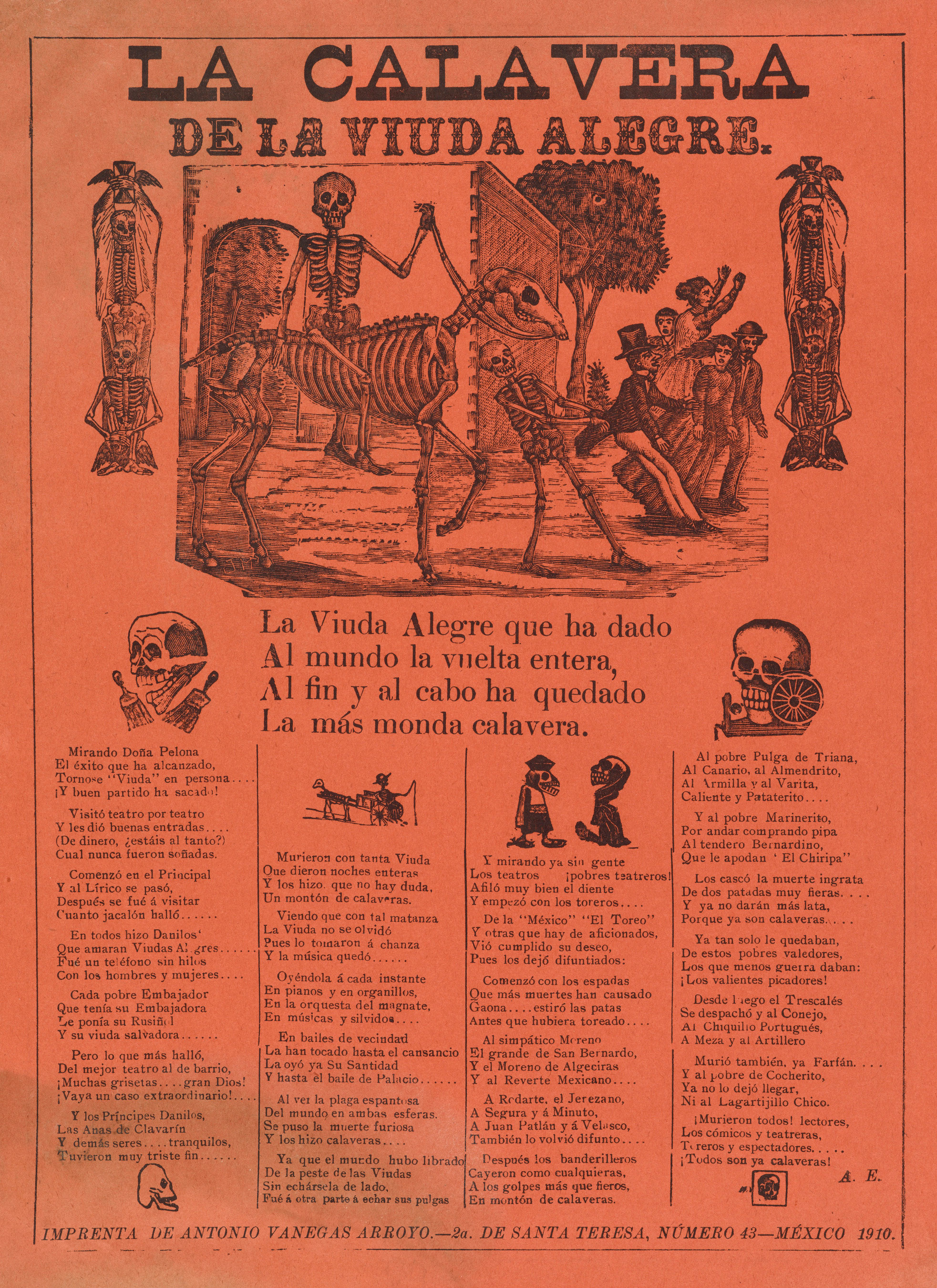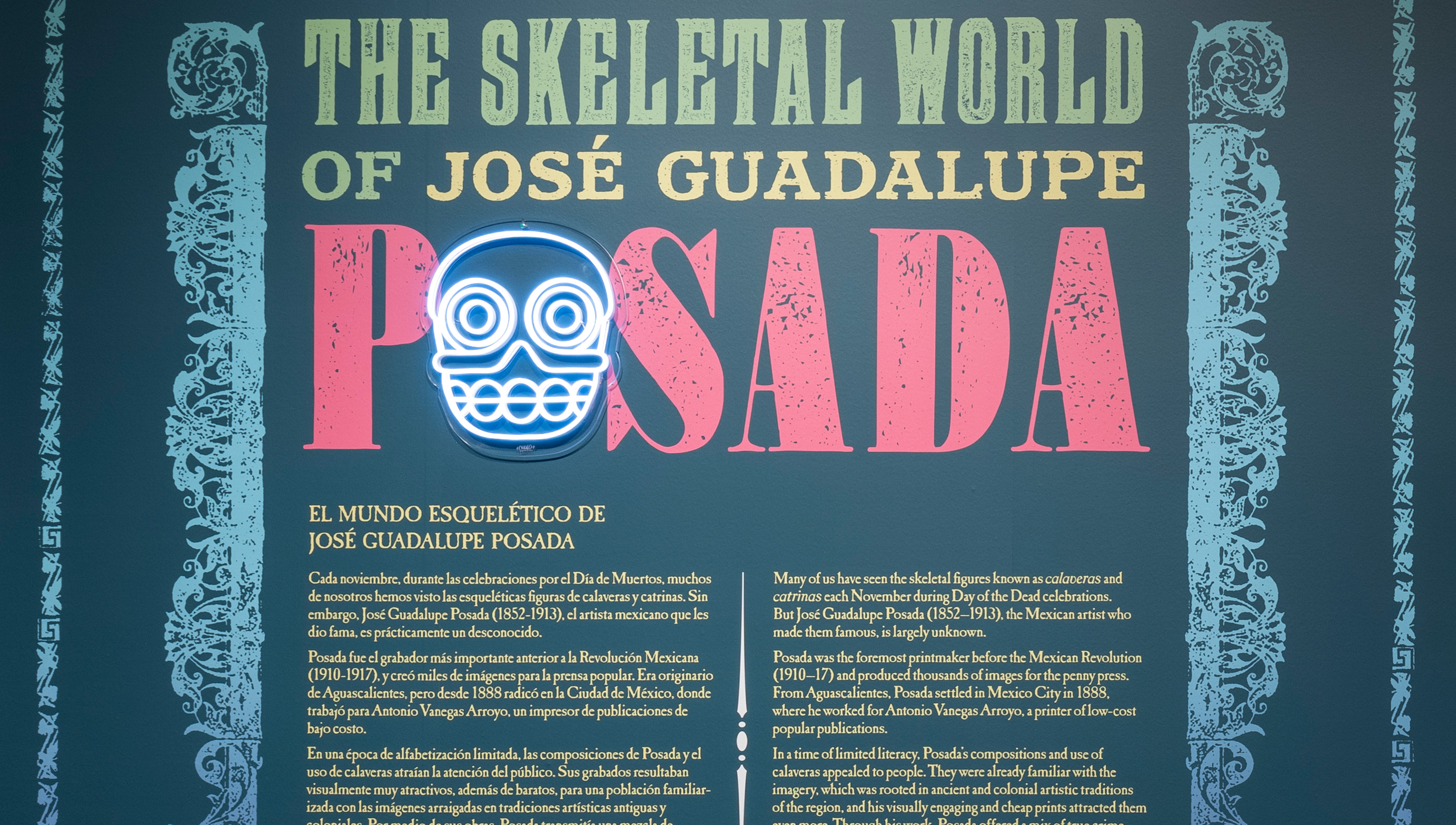
La Calavera Catrina (detail), 1913. From Wikimedia Commons, the free media repository.

José Guadalupe Posada, La Calavera de la Viuda Alegre (The Calavera of the Merry Widow), 1910. Wood block print on paper; 15¾ × 11¾ in. Denver Art Museum: Gift of Charles F. Ramus, 1948.860
His printed works were small masterpieces that were incisive and scathing, with cartoons that satirized daily events and common concerns. He created hundreds of popular images of skeletons illustrating stories told in accompanying verse or rhymes describing a popular or famous character, a situation or a critique of known politicians and their abuses. These skeletal forms are known as “calaveras literarias” (literary skulls), also known by the endearment term “calaveritas.”
It might be said that the antecedents of these types of verses dedicated to death could be found in the work Coplas a la muerte de su padre (Stanzas about the Death of his Father) by the Spanish poet Jorge Manrique (about 1440–1479), and in images such as In ictu oculi (in a blink of an eye) by the Spanish painter Juan de Valdés Leal, (about 1670). The uniquely Mexican calaveras are also based in the Mexican Indigenous tradition and belief system that death is a companion ever-present in a person’s life. Life is but a borrowed moment in time, for we all start our journey to the end of life from the moment we are born.
Calaveritas may express pain and suffering. The comical image in which the skeleton is portrayed can bring levity to a natural catastrophe, or to the inconveniences of everyday life, such as unjust political practices. Mexicans are said to have as one of their cultural traits the ability to laugh in the face of suffering, accepting death as a part of living. This is probably the rationale behind the funny calaveras. It may seem that Mexicans are irreverent towards death, but in reality, it is a way to make sense of a destiny that awaits us all: rich or poor, young or old.
Calaveritas are quick-witted, often humorous caricatures that intentionally highlight an aspect of the personality of the targeted subject, together with a rhyme or poem alluding to the deeds of the character in question. In Mexico, calaveritas are used in many different ways and formats. They can be seen as a window decoration for businesses such as bakeries to entice the public to buy delicious pan de muerto, a traditional bread consumed during Day of the Dead celebrations. Calaveras often appear published in newspapers and magazines as epithets celebrating famous or popular celebrities that are still among the living or written in homage of departed beloved figures. Calaveritas may also satirize infamous characters (mainly in politics). When used for this purpose, calaveritas utilize parody to focus attention on a person, a group, or political party regarding a variety of issues: from the increase in the cost of products and services, to the incompetence or abuses of political mandates or any other person in a position of power, without fearing (too much) the consequences these critiques. To this day, calaveritas as a form of expression continues to be an integral part of the Day of the Dead celebrations in Mexico. In Denver, the publication El Comercio de Colorado has a long-time tradition of publishing calaveritas literarias for the festivities. This year, the Denver Art Museum hosted El Comercio de Colorado for a calaveritas reading in Spanish, complete with the enjoyment of the delicious pan de muerto, for the first time ever!
José Guadalupe Posada’s portrayal of calaveras, such as his popular Catrina (the female of catrin, a person of means preoccupied with his/her personal appearance), allowed for artists and the general population to express freely on a diversity of topics.
The genius and excellent graphic art of Posada gave inspiration to artists of the stature of Leopoldo Méndez, José Clemente Orozco, and Diego Rivera, to name a few. Rivera acknowledged this influence, immortalizing Posada (as his father) and Catrina (as his mother) in his mural Dream of a Sunday Afternoon in Alameda Park.
The exhibition The Skeletal World of José Guadalupe Posada, on view at the DAM through May 12, 2024, provides the unique opportunity to experience the extraordinary art and times of this important cultural icon.

